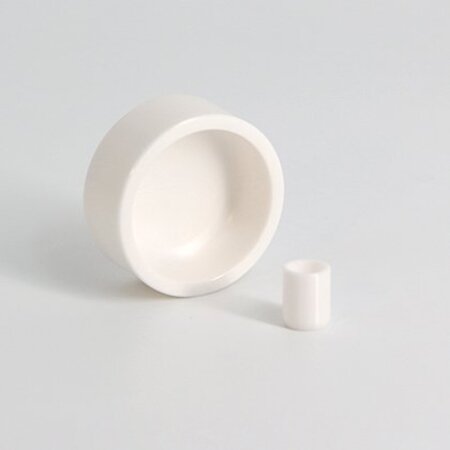Zirconia crucibles have made an impact in the field of material science due to their exceptional thermal and chemical durability. Their thermal and chemical resistance makes them essential for advanced material synthesis. Dominated by zirconium dioxide (ZrO₂), these crucibles stand out in extreme conditions and are extensively used in industries which are precision-focused and high-temperature sensitive. This article focuses on the high transformative applications of zirconia crucibles in high-temperature material synthesis.
Why Zirconia Crucibles Dominate High-Temperature Applications
Unmatched Thermal Resistance
Obtaining zirconia crucibles is a technologically advanced process that extracts zirconia from various rocks and minerals. These ease of obtaining zirconia makes the substitution of alumina or quartz a common practice. Being able to sustain over 2,500°C makes these crucibles indispensable. Zirconia is known for its high melting point (~2,715°C) and low thermal conductivity which reduces heat loss.
Altered Powders: Conventionally, Mecahnical Milling forms powder blasting, render powders for rotary systems into blast chambers
Never-Achieved Chemical Inertness
51785687 ZrO WI ZrO Corrosion Resistant
Zirconia Known for its Phosporous Inerta Protects Various Active Components Due To
Withstand
Unlike the metal pincers, Zirconia is not prone towards corrosion from molten metals and acids as well as reactive compounds.
More than 1200 °C like during a blend petroleum and air the metals. This trait ensures feasibility in fields like semiconductor crystal growth or rare earth metal refining where risks endangering purity must be removed.
Rare Earth Metals Leaving Semi Conductor Transpaper Risks Elements Contaminated os
Mechanical Strength
Zirconia’s toughness retards cracking from fast thermal cycling. Such resistance is paramount in processes such as powder metallurgy heating repeatedly.

Key Applications in Material Synthesis
1. Advanced Ceramics Production
Zirconia crucibles are vital in synthesizing high-performance ceramics like zirconia-toughened alumina (ZTA) and zirconia-mullite composites. These materials, used in aerospace and biomedical implants, require precise control over phase transitions and grain structures, achievable only in zirconia’s stable thermal environment48.
2. Single-Crystal Growth
In the production of synthetic gemstones (e.g., cubic zirconia) or laser crystals, zirconia crucibles enable contamination-free melting. The Soviet-developed “skull crucible” method, which relies on zirconia’s insulating properties, revolutionized large-scale cubic zirconia synthesis1.
3. Refractory Material Development
Zirconia’s use in refractory linings and coatings for industrial furnaces is amplified by its ability to maintain structural integrity under thermal stress. Crucibles here serve as testing vessels for new refractory formulations9.
Case Study: Enhancing Powder Metallurgy
In powder metallurgy, zirconia crucibles facilitate the production of high-performance tool steels like CPM M4 and T15. The Crucible Industries (a leading U.S. manufacturer) employs these crucibles to melt and atomize alloys, ensuring uniform carbide distribution and superior mechanical properties in final products2.
SEO-Optimized Keywords Integration
Zirconia Crucibles: Essential for high-temperature stability.
Crucibles: Zirconia variants outperform traditional materials in durability and thermal management.
Zirconia crucibles are the unsung heroes of modern material science, enabling breakthroughs in ceramics, metallurgy, and crystal growth. Their unparalleled thermal and chemical performance positions them as a critical tool for industries pushing the boundaries of high-temperature synthesis. For researchers and engineers, investing in zirconia crucibles means investing in precision, reliability, and innovation.
